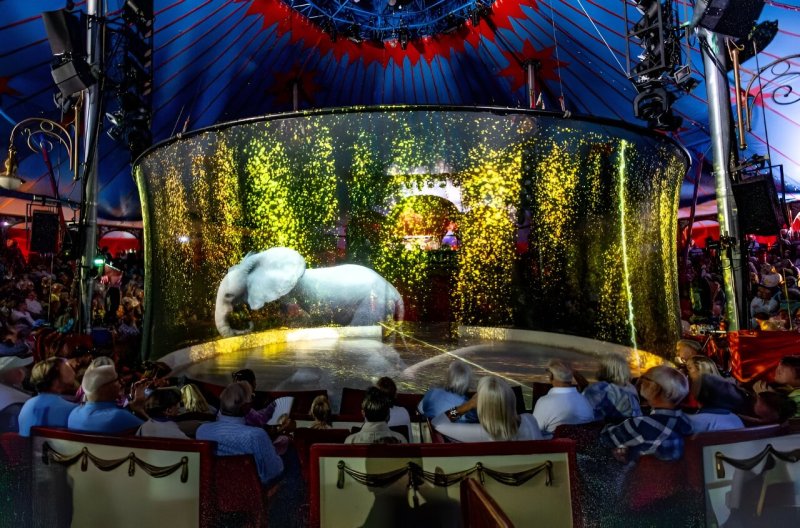
As futuristic as holographic technology may sound, in a sense it’s actually already in widespread commercial use. Concerts and similar events already use volumetric projection, with a fine mesh (hologram mesh or gauze) acting as the medium on which the image is projected to give the illusion of a 3D image. The widespread availability of this technology has now enabled Germany’s Roncalli circus to reintroduce (virtual) animals to its shows after ceasing the use of live lions and elephants in 1991 and other animals in 2018.
For the sticklers among us, these are of course not true holograms, as they do not use a recorded wavefront, nor do they seek to recreate a wavefront. Rather they employ as mentioned volumetric projection to essentially project in ‘thin air’, giving the illusion of a tangible object being present. By simultaneously projecting multiple views, to an observer standing outside the projection mesh, it would thus appear that there is a physical, three-dimensional object which can be observed. In the case of the Roncalli circus there are 11 projectors lining the circumference of the mesh.
To a circus the benefits of this approach are of course manifold, as not only do they no longer have to carry lots of animals around every time the circus moves to a new location – along with the on-site demands – but they get to experiment with new shows and new visuals that were never before possible. Ironically, this could mean that after 3D fizzled out at movie theaters, circuses and similar venues may be in a position to make it commonplace again for the masses.
0 Commentaires